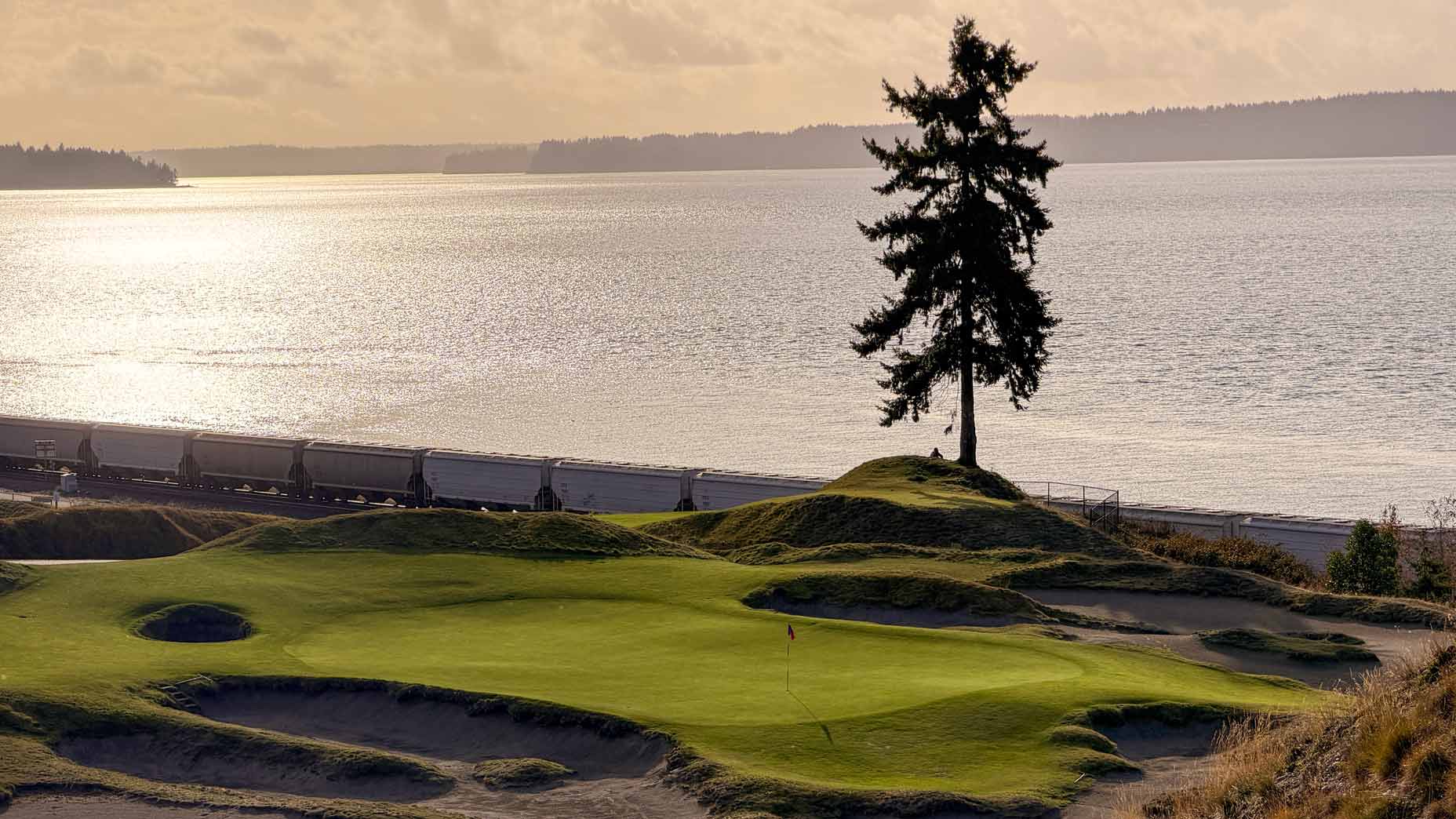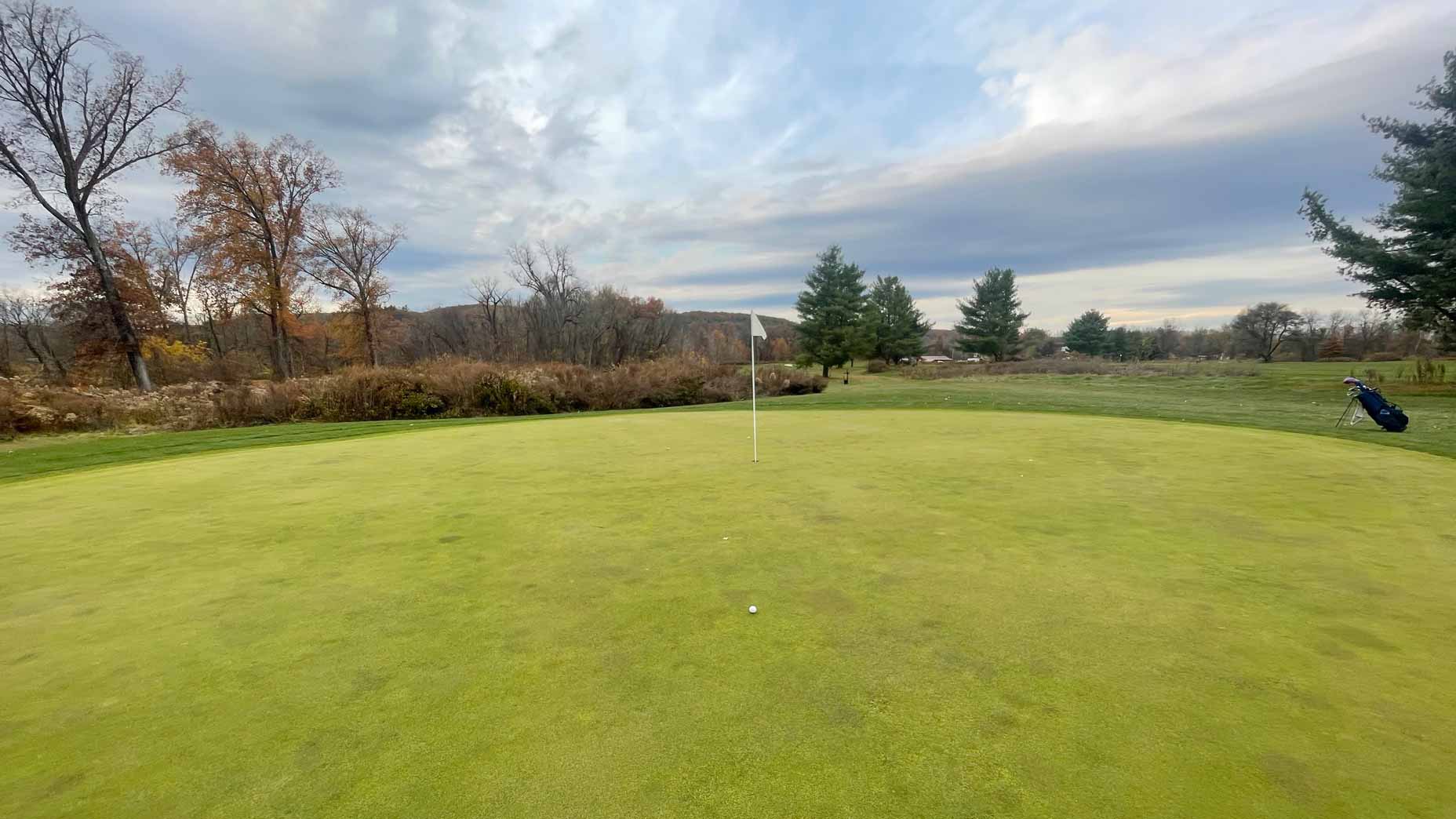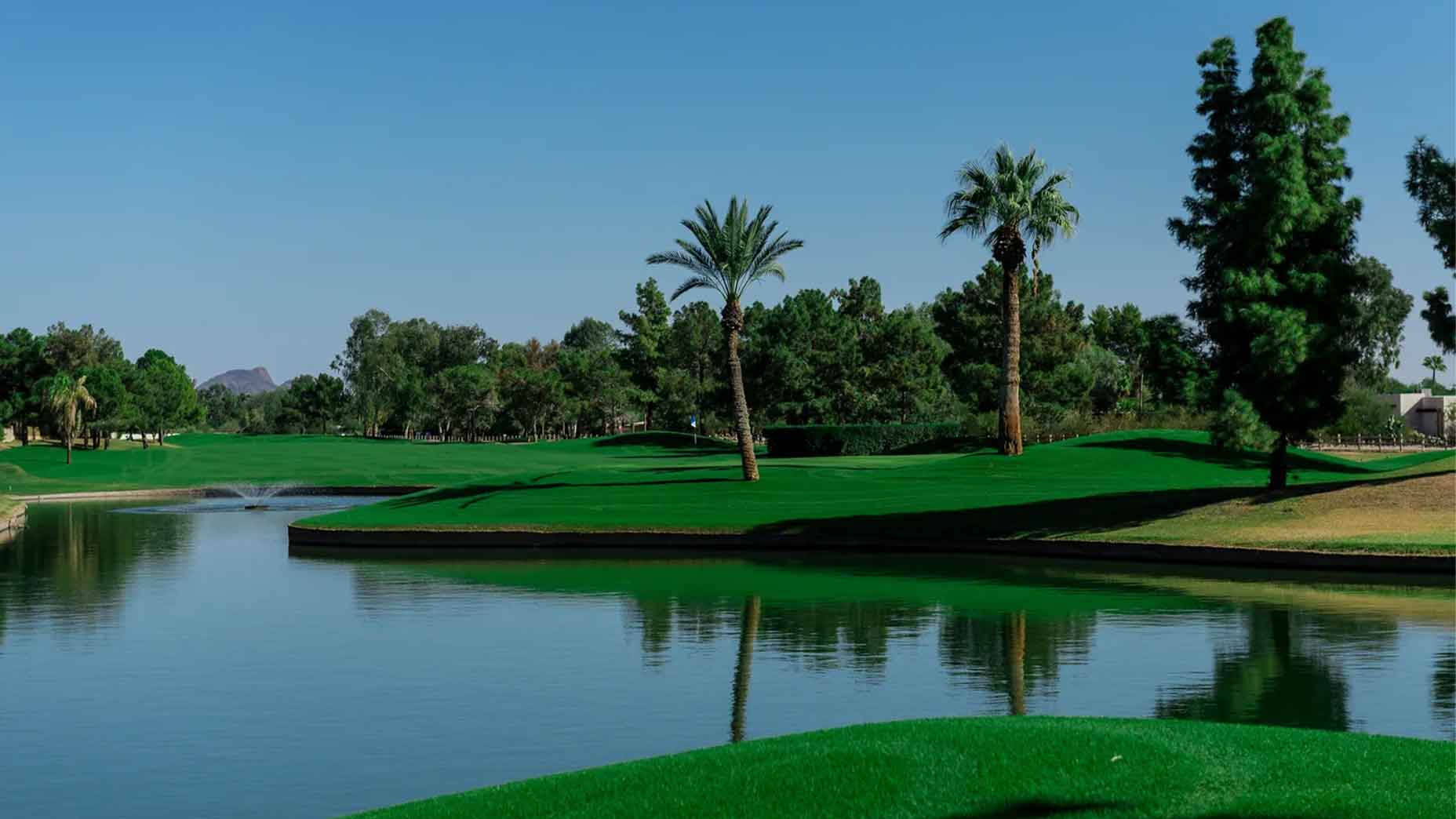To help sort out the X’s and O’s when the Philadelphia Eagles meet the New England Patriots in the Super Bowl next week, turn to the experts at Sports Illustrated. As to the golf battle, here’s how we see it.
Historic Tournament Golf Course
Philadelphia: Merion
New England: The Country Club
The first category could well be the most competitive. In most head-to-head matchups, The Country Club would romp. Not here. For sheer history, it’s true that The Country Club stands alone. Located in the Boston suburb of Brookline, it was one of the five charter clubs that founded the United States Golf Association in 1894. It was the scene for Francis Ouimet’s inspiring upset of top British professionals Harry Vardon and Ted Ray to win the 1913 U.S. Open, which popularized golf in the United States as never before. In time, it yielded the book and movie, “The Greatest Game Ever Played, ”a staple during Golf Channel rain delays. Fifty years later it hosted its next U.S. Open, when Julius Boros beat Arnold Palmer and Jacky Cupit in the playoff, after tying at an astronomically high score of nine-over-par 293 in regulation. Rees Jones spawned the classic course restoration craze with his retrofitting of The Country Club ahead of the 1988 U.S. Open, when Curtis Strange downed Nick Faldo in yet another playoff, 71-75. And never to be forgotten is Justin Leonard’s 45-foot, 17th hole bomb that clinched the 1999 Ryder Cup for the U.S.
Ah, and then there’s Merion—specifically Merion’s East course. Golf at Merion dates to 1896 and Hugh Wilson’s design of the East course occurred 16 years later. History’s greatest golfers figure prominently at Merion. Bobby Jones made his national debut at age 14 here, reaching the quarterfinals of the 1916 U.S. Amateur. He then culminated his brilliant career by clinching the Grand Slam here in 1930, winning the same tournament by an 8 and 7 margin in the final. Merion saw Ben Hogan complete his awe-inspiring comeback from a horrific car accident by claiming the 1950 U.S. Open in a three-way playoff, only earning that spot via an iconic 1-iron shot into the 72nd green. Lee Trevino edged Jack Nicklaus in a playoff to decide the 1971 U.S. Open, after tying at even-par 280. Other U.S. Opens here were captured by Olin Dutra in 1934, David Graham in 1981 and Justin Rose in 2013.
Brookline is older, it helped put golf on the map in the U.S. and owns a Ryder Cup finish for the ages. Merion is the higher-ranked course, has Bobby Jones (twice), Ben Hogan’s incomparable comeback and Lee Trevino tossing a snake at Jack Nicklaus.
Edge: Philadelphia
Quarterback/Coach’s Golf Prowess
Little is known about the Eagles quarterback Nick Foles’ talent for golf, but the man he replaced due to season-ending injury, Carson Wentz, can’t be terribly skilled, based on his recollection of a team-building exercise he and seven teammates did at a North Dakota golf course in July 2017. “We went golfing,” Wentz said. “There were eight of us, we played best ball. It took four-and-a-half hours to play 10 holes. It was a disaster. I’ve never seen so many swings and misses. But we had fun.”
Brady’s game hovers between an 8 and a 10, but he’s put his swing on display on some big stages, including multiple appearances in the AT&T Pebble Beach Pro-Am and on the HBO series, “Entourage” in 2009. It’s possible he learned some secrets from Rory McIlroy during their Augusta National game a few years back. Either way, he’s got a massive advantage over either Foles or Wentz.
Eagles coach Doug Pederson, a former backup to Brett Favre with the Packers, was described as a scratch golfer 15 years ago when he and Favre were frequent playing partners. A member of New Jersey’s Laurel Creek Country Club, Pederson competed in the American Century Championship in Lake Tahoe in 2017, where his pre-tournament odds of 50-1 were the same as current Packers quarterback Aaron Rodgers, who plays off a 3.9 index. Pederson posted respectable rounds of 82-82-86 to finish tied for 49th.
Patriots domo Bill Belichick isn’t in Pederson’s league, but he’s no slouch. The Sankaty Head (Mass.) Country Club member was sporting a 16 handicap when he competed in the 2017 AT&T Pebble Beach Pro-Am. The lowest he’s ever been is a 12, but he’s a formidable competitor, helping his pro partner nicely in all the years he’s teed it up at Pebble. In 2006, he played Augusta National three times, with scores he reported to be in the mid-80s.
The Brady/Belichick duo outdoes the Wentz/Foles/Pederson team, despite the Eagles coach being best of the bunch.
Edge: New England
Marquee Public-Access Golf Course
Philadelphia: Glen Mills
New England: Pinehills (Jones)
Neither metro area boasts any daily-fee superstars, but there are plenty of winners nonetheless. Using a 45-minute drive as our cutoff point, the top public track in Philadelphia is the Golf Course at Glen Mills.
Located 35-45 minutes west of downtown, Glen Mills rolls out a 1998 Bobby Weed creation that’s partly open and partly forested—and always testing. The 6,646-yard, par-71 layout yields a burly slope of 141, with water hazards and elevation changes as frequent companions. The private club ambiance is enhanced by the generous 12-minute tee time spacing.
Pinehills in nearby Plymouth boasts two excellent tests, one by Nicklaus Design, the other by Rees Jones. Due to its emphasis on premium driving for the lower handicap player, our choice is the Jones. Low sand dunes and pine-accented scrub dominate the Jones layout, notably at the downhill par-5 15th, which peers out over a stew pot of trees and shrubbery.
Edge: Philadelphia
Best Major Championship Winner
Philadelphia: Johnny McDermott
New England: Francis Ouimet
Another surprisingly close category, thanks to one of history’s most underappreciated and most tragic figures, Johnny McDermott. Philadelphia-born John J. McDermott became the first American-born player to win the U.S. Open when he claimed the title in 1911. At 19 years, 10 months, he was and remains the youngest-ever champion of the U.S. Open, and the only teenage winner. He repeated his feat in 1912, becoming the first player to break par for 72 holes in a major. In 1913, he captured the prestigious Western Open and the Philadelphia Open and took fifth at the British Open. From there, it all went wrong. McDermott learned of a financial setback shortly before the 1913 U.S. Open, endured a boat collision on the high seas in 1914 and by 1915, was out of the game for good after suffering a nervous breakdown. He was in and out of institutions the rest of his life.
Francis Ouimet put golf on the American map with his unparalleled upset victory at the 1913 U.S. Open, played at The Country Club, mere steps from the house where he was raised. His triumph will live forever, when as a 20-year-old, he made the playoff against the world’s top two professionals, England’s Harry Vardon and Ted Ray, then shocked them in the 18-hole playoff, firing a 1-under-par 72, beating Vardon by five and Ray by six. He would later win two U.S. Amateur trophies, in 1914 and 1931. A lifelong amateur, he competed on the first eight Walker Cup teams and captained the next four. McDermott might have been the greater golf genius, but Ouimet’s impact and longevity carry the day.
Edge: New England
Best Downtown City Views from a Public Golf Course
Philadelphia: Franklin D. Roosevelt (FDR) Golf Course
New England: Granite Links at Quarry Hills
Debuting in 1936 and named for the sitting president of the United States, who pulled us out of the Great Depression, FDR (well, its regulars, anyway) wishes the president were still around to work his magic. Its urban setting features views of the I-95 Bridge, the whiff of sugary baked goods from the nearby Tastykake factory and the convenience of being six blocks from the professional sports stadiums. And despite its mature park ambience, the value-priced, 6,002-yard, par-69 layout can’t seem to overcome conditioning woes.
Emerging out of Boston’s “Big Dig” civic project in 2004, Granite Links at Quarry Hills in suburban Quincy rolls out three John Sanford-designed championship nines atop an old quarry that also yield outstanding panoramas of downtown Boston. Bold bunkers and granite outcroppings further heighten the aesthetic appeal, and for good measure, the 19th hole facilities are the best in the region.
Edge: New England
And the winner is:
New England narrowly wins the golf competition—and the Super Bowl—by a 24-23 score. 





